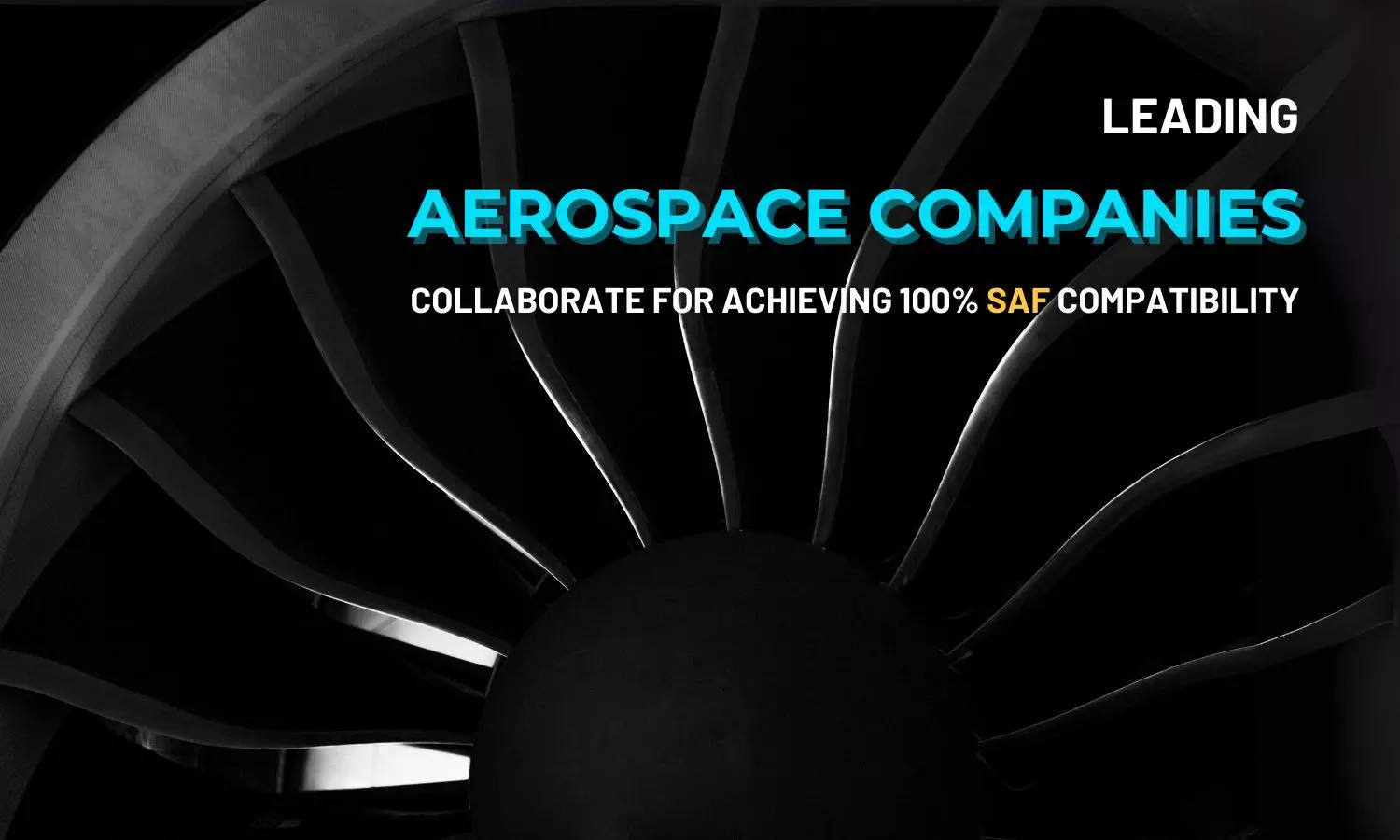Leading aerospace companies collaborate for achieving 100% SAF compatibility
But SAF has to be blended with traditional aviation fuel, which is made from fossil fuels
image for illustrative purpose

A single long-haul flight can create more carbon emissions in a few hours than the average person in 56 different countries will generate in an entire year. So is it possible for aviation to ever become compatible with a net-zero world?
Airlines that are members of the International Air Transport Association (IATA) have committed to achieving net-zero carbon emissions from their operations by 2050. They say SAF could help them cut their emissions by 65%.
The reason SAF could do this is that it is a type of biofuel, meaning it is made from plant or animal materials, rather than fossil fuels. BP makes SAF using cooking oil and animal waste fat. Other options include using agricultural and forestry waste, or municipal waste.
However, SAF still has to be blended with traditional aviation fuel, which is made from fossil fuels. Current rules state that SAF can make up a maximum of 50% of the mixture, but there are hopes that airlines will be able to use 100% SAF by 2030.
A key focus for the industry is ensuring that SAF can be used as a “drop-in” replacement for conventional jet fuel. This means that aircraft engines do not have to be modified to use it.
The International Aerospace Environmental Group (IAEG) has announced that leading aerospace companies are collaborating to evaluate technical issues regarding the compatibility of 100% sustainable aviation fuel (SAF) with airplane systems. Recognizing SAF is a fundamental step to reaching aviation’s 2050 net-zero CO2 goal, Airbus, Boeing, Dassault Aviation, GE Aerospace, RTX’s Pratt & Whitney, Rolls-Royce, and Safran, among others, have formed Work Group 13 (WG 13) to assess the impacts of 100% SAF on airplane systems.
With Boeing as lead and Airbus as deputy lead, the IAEG team members will coordinate 100% SAF testing efforts, for voluntary and unilateral consideration and use by WG 13 members. These test results will help the Work Group inform ASTM International as it develops new specifications for 100% SAF. The team will also engage infrastructure stakeholders, including fuel producers, airports and airlines, to understand what steps may be required to support the transition to this fuel.
“This collaboration will help prepare the broader aviation ecosystem for 100% SAF capabilities, as part of the aviation industry goal of achieving net zero CO2 emissions by 2050,” said Ryan Faucett, Boeing Vice-president of Environmental Sustainability and IAEG Board Member.
“We will share our findings from our SAF compatibility and ground-breaking jet reference fluids research and continue to collaborate with this Work Group to support a more sustainable aviation future, together,” he added.
"Achieving up to 100% SAF capability for commercial and military aircraft fleets will require a high level of industry collaboration,” said Dr. Bruno Costes, Airbus Senior Director of Institutional Relations and Standardisation and IAEG Chair. “Airbus will bring its knowledge and experience from years of 100% SAF demonstration flights, coupled with our technical expertise in developing new fuel standards. SAF will be a key enabler for the decarbonisation of the sector by 2050." There are strict sustainability criteria around SAF. To qualify as sustainable, it must cut greenhouse gas emissions by at least 50% compared with today’s oil-based jet fuels. However, research shows that it can achieve much more than this, reaching cuts of up to 80% compared with traditional jet fuels.
And the next generation of sustainable aviation fuels could manage CO2 reductions of 85-95%. They would be made from biomass – which includes algae, crop residues, animal waste and forestry residue – and everyday rubbish, such as product packaging and food leftovers.
But bio-based fuels still only make up around 0.1% of total aviation fuel consumption. So why aren't they being used more widely?
A scarcity of waste-based feedstock is another hurdle, the European Parliament says. This is why a broader range of feedstocks is needed for use in the production of SAF, according to non-profit organization the Environmental and Energy Study Institute (EESI).
Another issue that has to be tackled is its lower energy density than traditional jet fuel. This means that one litre of jet fuel contains more energy than one litre of SAF, so you could fly a plane much further using jet fuel than using the same amount of SAF.
Planes would therefore need to carry high volumes of SAF to make long-haul flights – such high volumes that it could become impractical.
Governments need to craft policy that can help encourage the scale-up of SAF production, while helping lower the cost, the European Parliament says. Providing companies with certainty around long-term policies can reduce investment risks, which will in turn help foster research, development and commercialization of production technologies and innovative feedstock.

